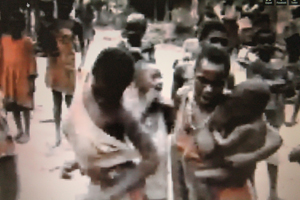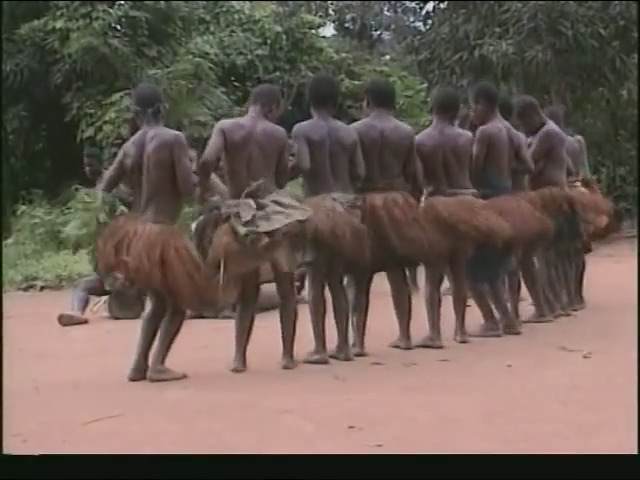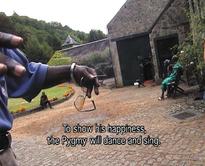The cliché of pygmies dancing in a circle when visitors arrive, often upon request, is really a real cliché. In a workshop at ERG, we looked at film rushes from the Belgian Hutereau expedition into Congo 1911-1913 where we see the probably first Belgian foundation of this imagery.One of my colleague participants remarked that we do not show people like that anymore, on which I answered ‘oh yes, that is exactly how we have been showing pygmies ever since. That is how we still show them over and over again’. The ‘how’ in this is defined by standing on the outside of a circle of dancing pygmies with the camera, hovering above the ‘little people’ with a top-down camera point of view.
This cliché way of filming was actually created in the Hutereau period, the beginning of the 20th century. And today, it is not exceptional at all ; even UNESCO is doing it .
A likewise cliché, for those who dare, is having yourself photographed or filmed standing in all your tall whiteness next to a little ‘male’ or ‘female’ Aka, Baka or Bakoya, eventually even with your hand on your object of curiosity’s shoulder.
I surprised my colleagues with the story how in 2002, in a very clumsy fundraising effort, a group of pygmies was brought to Belgium, to a Zoo, where they constructed huts and danced in a circle for visitors.
The Brussels-based artist Bernard Mulliez documented his short visit there and made this excellent video: L’aventure ambiguë (link).
In 2013, I tried to reconstruct the Lobayé dance with cuts from economic newspapers. Here’s an excerpt:
The workshop at ERG in november/december 2016 was led by Alexander Shellow and Anna Seiderer.



